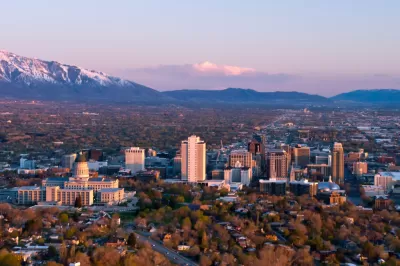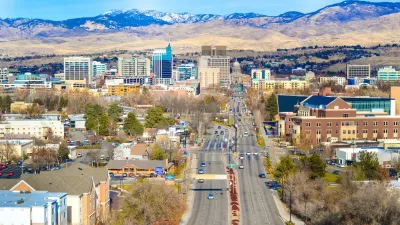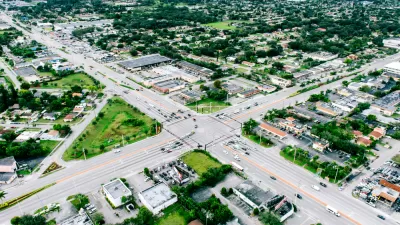The state of Utah created Envision Utah in the late 1990s to address growth while maintaining quality of life and protecting the environment in the state. The plan set goals for 2020, so it's time to evaluate its success.

Tony Semerad checks in with the fruits of "Quality Growth Strategy" at the heart of Envision Utah, the state's plan for growth approved 20 years ago to prepare for a wave of new residents. Planetizen shared accolades for Envision Utah in 2015 and 2017.
Here's how Semerad describes the impetus for Envision Utah:
Residents grew anxious over the visible ways Utah was changing. State officials and urban planners launched what proved to be a massive public process in hopes of getting ahead of the challenge.
The aim: Let everyday Utahns — and not just politicians — define what was dubbed “quality growth.” The resulting template would help guide land use patterns in the state through 2020.
The assessment Semerad provides is unequivocally positive.
By applying those quality growth strategies across the 10 counties spanning the Wasatch Front and Back and beyond, the state saved vast amounts of land and water, reduced car trips and smog and built more of a mix of housing to better suit its population. The shift also accelerated construction and use of mass transit.
Providing the data for this analysis is a report released recently by Envision Utah to evaluate the results of the long-term plan. For more information on the accomplishments of Envision Utah, see also the website for the Quality Growth Strategy Commission, a state organization with the purpose of supporting local governments with Quality Growth planning.
FULL STORY: Over 20 years ago, Utah aimed for ‘quality growth’ as its population boomed. How has that turned out?

Maui's Vacation Rental Debate Turns Ugly
Verbal attacks, misinformation campaigns and fistfights plague a high-stakes debate to convert thousands of vacation rentals into long-term housing.

Planetizen Federal Action Tracker
A weekly monitor of how Trump’s orders and actions are impacting planners and planning in America.

In Urban Planning, AI Prompting Could be the New Design Thinking
Creativity has long been key to great urban design. What if we see AI as our new creative partner?

King County Supportive Housing Program Offers Hope for Unhoused Residents
The county is taking a ‘Housing First’ approach that prioritizes getting people into housing, then offering wraparound supportive services.

Researchers Use AI to Get Clearer Picture of US Housing
Analysts are using artificial intelligence to supercharge their research by allowing them to comb through data faster. Though these AI tools can be error prone, they save time and housing researchers are optimistic about the future.

Making Shared Micromobility More Inclusive
Cities and shared mobility system operators can do more to include people with disabilities in planning and operations, per a new report.
Urban Design for Planners 1: Software Tools
This six-course series explores essential urban design concepts using open source software and equips planners with the tools they need to participate fully in the urban design process.
Planning for Universal Design
Learn the tools for implementing Universal Design in planning regulations.
planning NEXT
Appalachian Highlands Housing Partners
Mpact (founded as Rail~Volution)
City of Camden Redevelopment Agency
City of Astoria
City of Portland
City of Laramie





























